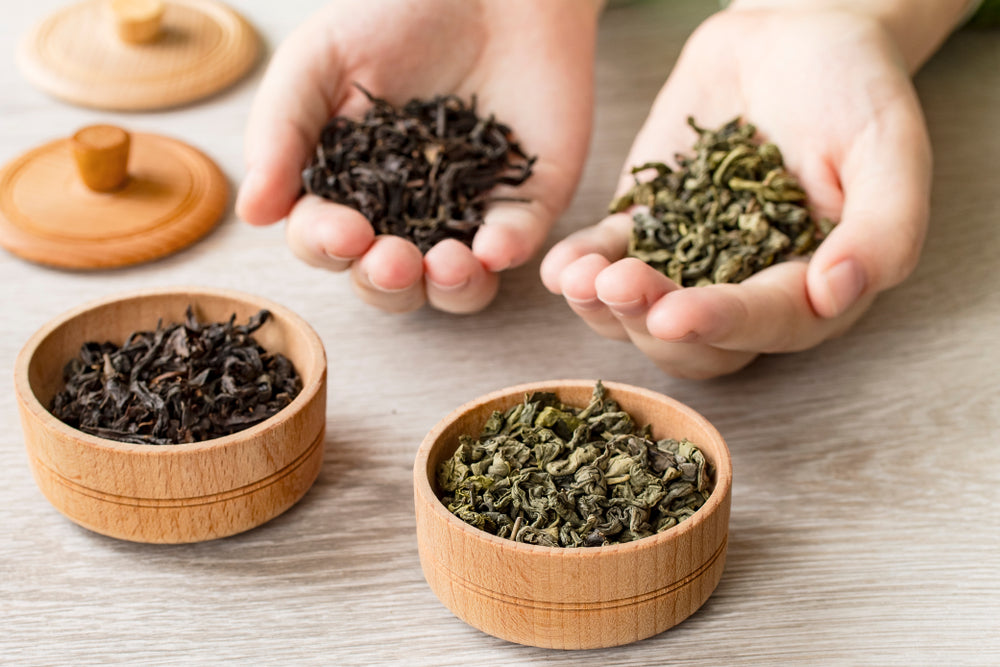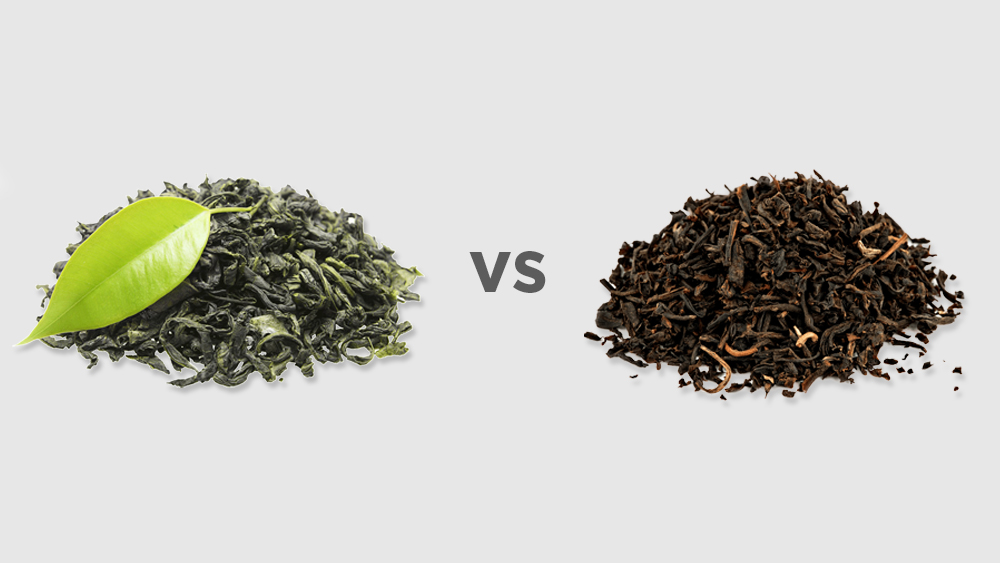Blog
Green Tea vs Black Tea – Which Is Right for You?
When it comes to tea, two varieties consistently dominate the conversation: green tea and black tea. Both are beloved for their unique flavors, health benefits, and energizing qualities, yet they differ in terms of taste, preparation, and nutritional content. So, how do you decide which tea is right for you? Whether you’re a seasoned tea drinker or just starting to explore these beverages, this guide will help you compare green tea and black tea, highlighting their distinct characteristics to help you make an informed choice.
1. Production Process – How Green and Black Tea Differ
The main difference between green tea and black tea lies in their production processes. Both teas are derived from the same plant, Camellia sinensis, but the methods of processing are what set them apart.
- Green Tea: Green tea leaves are minimally processed. After harvesting, the leaves are quickly steamed or pan-fired to prevent oxidation, preserving their green color and delicate flavor. This process helps retain the tea’s antioxidants and preserves the freshness of the leaves.
- Black Tea: Black tea undergoes full oxidation (or fermentation). After being harvested, the leaves are rolled and exposed to air, allowing them to oxidize and turn dark brown or black. This oxidation process results in a more robust flavor and a higher caffeine content than green tea.
Tip: If you prefer a lighter, more delicate flavor, green tea is your go-to. If you enjoy a bolder, more intense taste, black tea might be a better option.

2. Caffeine Content – A Natural Energy Boost
Both green tea and black tea contain caffeine, but the levels vary depending on the tea’s type and preparation.
- Green Tea: Typically contains about 20-45 milligrams of caffeine per 8-ounce cup. Because it’s less oxidized, green tea has a gentler, more moderate caffeine boost.
- Black Tea: Contains more caffeine, typically around 40-70 milligrams per 8-ounce cup, making it a better choice for those who need a stronger pick-me-up.
Tip: If you want a mild energy boost or need to cut down on caffeine, green tea is a good choice. For a more substantial, longer-lasting energy kick, black tea is ideal.
3. Flavor Profile – Finding Your Favorite Taste
One of the most noticeable differences between green tea and black tea is their flavor profiles. Each tea has its own distinct taste, and personal preference plays a big role in which one you’ll enjoy more.
- Green Tea: Known for its light, fresh, and grassy flavor. Depending on the variety and preparation, green tea can be slightly sweet, vegetal, or even slightly bitter. It pairs well with lighter flavors, such as honey, lemon, or mint.
- Black Tea: Offers a rich, bold, and often malty or astringent flavor. Some varieties, like Earl Grey, have additional notes of citrus or floral undertones. Black tea is more robust and can handle milk, sugar, or spices like cinnamon and cardamom.
Tip: If you enjoy lighter, more refreshing flavors, go for green tea. If you prefer a rich, full-bodied drink with depth, black tea is your best bet.

4. Health Benefits – The Goodness in Every Sip
Both green tea and black tea come packed with health benefits, but the specific nutrients and advantages can vary slightly due to differences in processing and oxidation.
- Green Tea: Green tea is known for its powerful antioxidants, particularly catechins like EGCG (epigallocatechin gallate). These compounds help fight oxidative stress and inflammation in the body. Green tea is also linked to improved metabolism, weight management, heart health, and even a reduced risk of certain cancers.
- Black Tea: Black tea contains theaflavins and thearubigins, which are antioxidants formed during the oxidation process. These compounds may help lower cholesterol, improve heart health, and enhance gut health. Additionally, black tea has been associated with better cognitive function and improved mood.
Tip: If you’re looking for weight management and metabolic benefits, green tea may be the better option. For heart health and improved digestion, black tea is a great choice.
5. Cultural and Traditional Differences – Tea Across the World
Green tea and black tea are both celebrated in various cultures around the world, and each has its own unique history and traditional uses.
- Green Tea: Green tea has been integral to East Asian cultures, particularly in China, Japan, and Korea. It is often consumed in ceremonies and rituals, and in Japan, matcha (a powdered form of green tea) is highly popular.
- Black Tea: Black tea holds a significant place in Western and South Asian cultures. In countries like India and Sri Lanka, black tea is consumed in large quantities, often prepared with milk and spices (such as in chai). It is also the main base for many popular beverages like English Breakfast and Darjeeling tea.
Tip: If you want to immerse yourself in a traditional tea ceremony or enjoy a light, mindful tea experience, green tea is a great option. If you’re interested in robust, hearty tea traditions, especially with milk, black tea will be more up your alley.
6. Which One Should You Choose?
Ultimately, the decision between green tea and black tea comes down to your personal taste preferences, caffeine needs, and health goals. Here are some key takeaways to help you decide:
- Choose Green Tea if:
- You prefer a light, delicate flavor.
- You want a moderate caffeine boost.
- You’re looking for antioxidant-rich tea to support metabolism and heart health.
- You enjoy cultural traditions like Japanese tea ceremonies or matcha drinks.
- Choose Black Tea if:
- You enjoy bold, strong flavors.
- You need a higher caffeine content for a more energizing experience.
- You want a tea that pairs well with milk, sugar, or spices.
- You’re interested in a traditional tea experience like English Breakfast or masala chai.
Conclusion
Both green tea and black tea offer unique benefits and flavors, and there’s no wrong choice – it all depends on what you’re looking for in a tea. Whether you prefer the lightness of green tea or the richness of black tea, both offer exceptional health benefits and a satisfying cup to enjoy. Try both and see which one aligns best with your taste and lifestyle!


